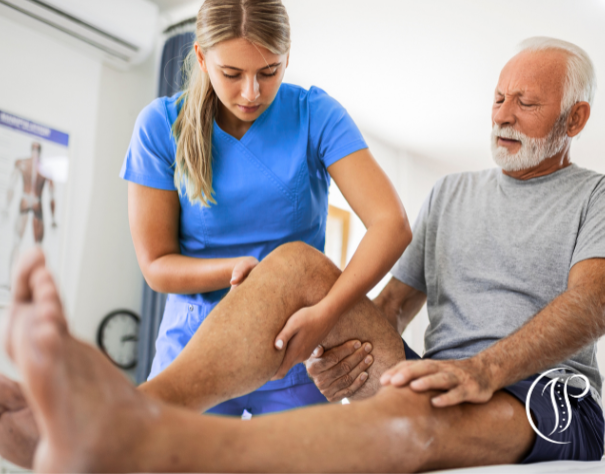
Mon - Sat : 10.00 AM - 4.00PM Sunday : Closed
nSTRIDE® APS is a new type of treatment that helps people with knee osteoarthritis. It uses proteins from your own blood to reduce inflammation and help repair damaged knee cartilage. This treatment is non-surgical and works by injecting a special solution into the knee joint.

To make this solution, a small amount of your blood is taken and processed using the nSTRIDE APS kit. This process separates important cells like white blood cells and platelets and concentrates them into a small amount of plasma. This plasma, full of healing proteins, is then injected into your knee.
In knee osteoarthritis, harmful proteins called inflammatory cytokines are found in higher amounts than helpful anti-inflammatory proteins. This imbalance causes pain, swelling, and damage to the knee cartilage.
nSTRIDE APS delivers a high concentration of anti-inflammatory proteins into the knee to block the harmful ones. This helps lower inflammation and slows down the breakdown of cartilage.
It also contains growth factors that help the cartilage heal and grow back. While nSTRIDE was first made to treat knee osteoarthritis, it is now being used in other joints too.
Compared to other treatments, nSTRIDE offers many benefits:
This treatment is best for people with mild to moderate knee osteoarthritis. It does not work well for severe cases where the cartilage is mostly gone.
Compared to surgery, nSTRIDE is less invasive and has almost no recovery time. Surgery might not help much if the osteoarthritis is moderate, but nSTRIDE can slow or even stop the damage.
nSTRIDE is similar to platelet-rich plasma (PRP) therapy because both use your blood to help heal. But nSTRIDE is different because it has special white blood cells and anti-inflammatory proteins that PRP does not. Also, nSTRIDE usually needs only one injection, while PRP may require several.
The doctor will take a small amount of your blood and prepare the nSTRIDE solution. Then, about 3ml of this solution is injected into your knee. You might feel a small pinch or some discomfort during the injection.
Afterward, your knee might feel sore or stiff for a couple of days. It’s best to avoid heavy physical activities for about two weeks after the injection. Pain relief usually starts within 1 to 2 weeks and can last up to two years.
Remember, nSTRIDE helps manage osteoarthritis but it’s not a cure.
Side Effects & Safety of nSTRIDE APS
Based on a data collection study by Mr. Vikas Vedi (2019)
Involves taking the patient’s own blood from the arm, then separating and purifying proteins through two quick centrifuge processes (about 20 minutes total).
Around 3 mL of protein-rich fluid is injected into the knee using a very small needle.
Procedure is performed under aseptic (germ-free) conditions.
According to data from the study, no serious or long-term adverse reactions were found.
Pain, Swelling, Stiffness. These symptoms usually last no more than 24 to 48 hours.
The treatment uses only the patient’s own blood, so there’s no risk of allergic or foreign body reactions.
More than 75% of patients experienced noticeable improvement.

Jacobs Pain Centre, 8920 Woodbine Ave, Ste. 102, Markham, ON L3R 9W9
Since 2002, Jacob’s Pain Centre has provided effective, comprehensive pain management through a multidisciplinary approach. We combine evidence-based treatments with supportive care to deliver accurate diagnoses and personalized pain management plans.
Copyright © 2025. All Rights Reserved.